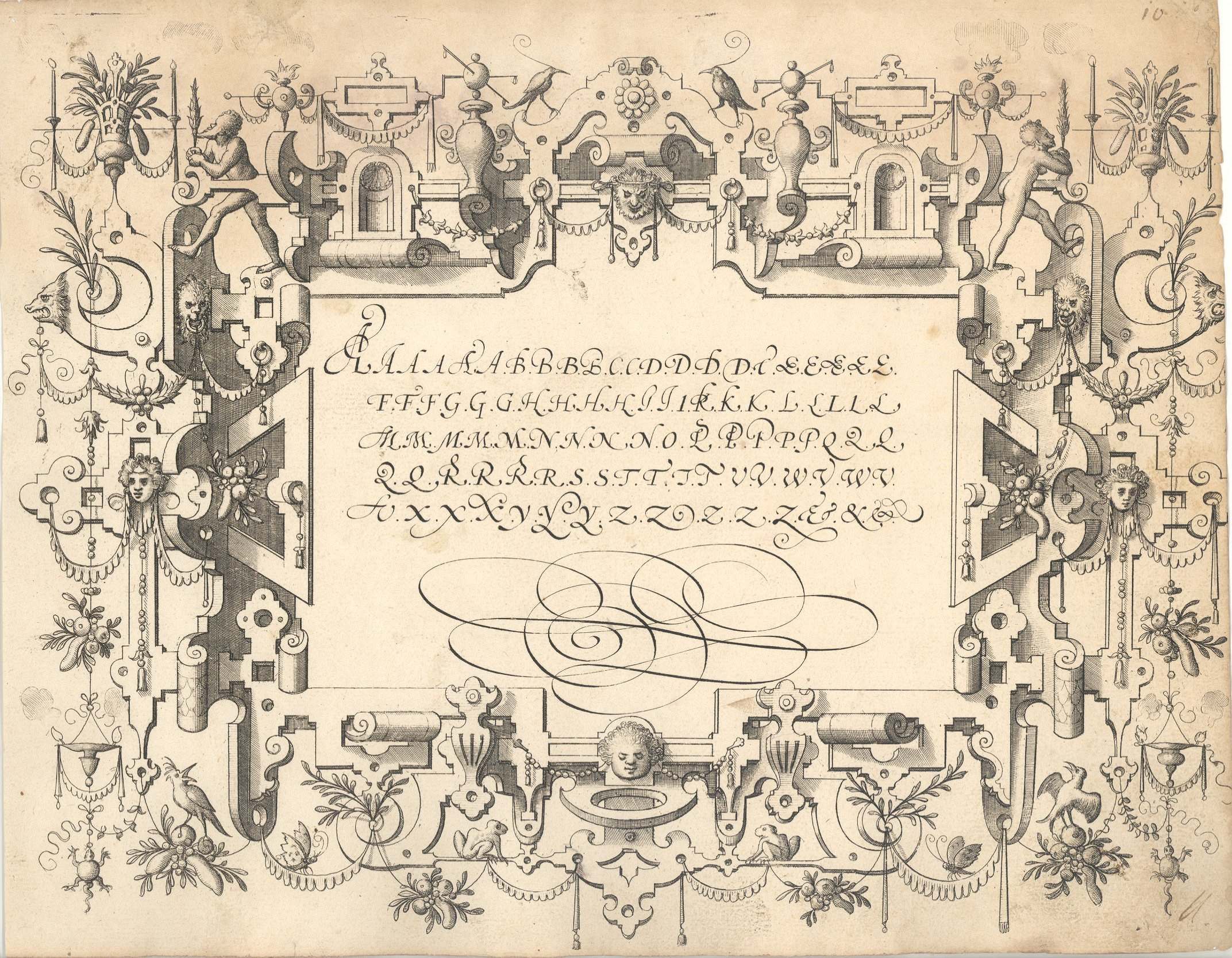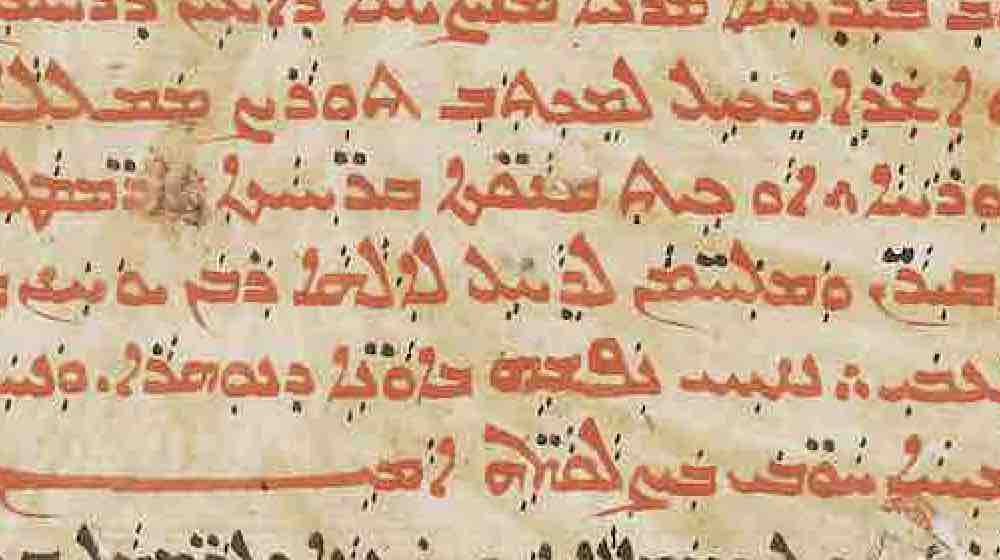The Calligrapher Clément Perret
The Calligrapher Clément Perret
April 13, 2023This story is part of an ongoing series of editorials in which HMML curators and catalogers examine how specific themes appear across HMML’s digital collections. From the Art & Photographs collection, Katherine Goertz shares this story about Scribes.
In the mid-15th century, the invention of the printing press made books relatively easier to produce and easier to acquire. Ironically, this led to a new vogue for the art and importance of handwriting. After all, personal, official, legal, and financial documents still needed to be written by hand.
A new style of script emerged—something looser, easier to read and write, and appropriate for a modern and interconnected Europe. In Italy, writing masters, teachers of handwriting, developed new “hands” (writing styles) and taught them to their students. But, with the book market booming, such things didn’t have to be taught in person. Manuals known as copy books were produced and sent across Europe, influencing how people wrote from Italy to Germany to France to England.
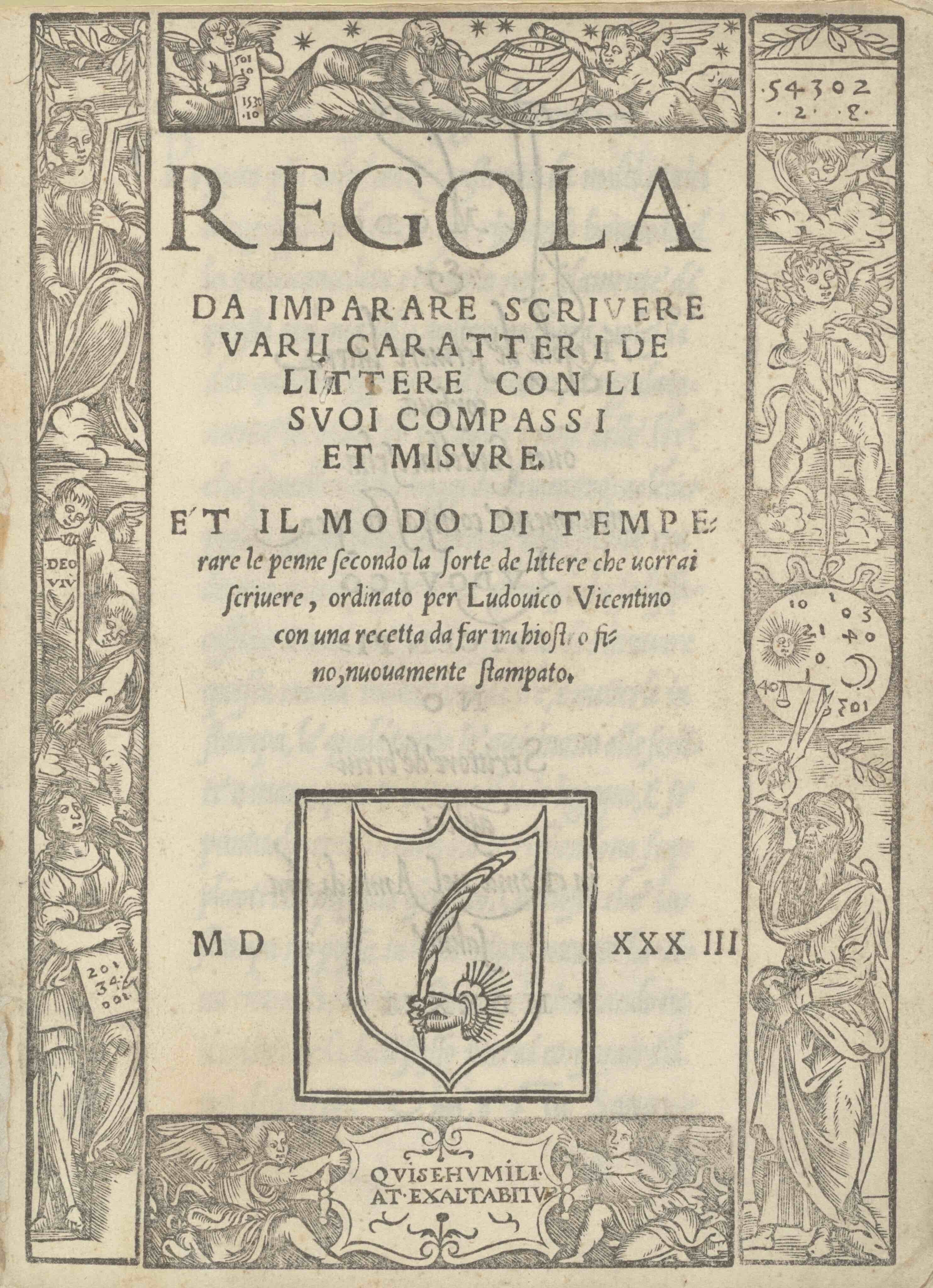
Cancellareca corsiva, the “Italian hand,” started as a tight script promoted by writing master Ludovico degli Arrighi. Within a few years, the popular version of cancellareca was much more fluid, with styles from the ornamental to the restrained promoted by competing masters. As writing masters sought recognition and sales, conflicts developed over whose script was the most appropriate for public consumption. Most famously, Francesco Cresci and Giovanbattista Palatino staged such an argument in the introductions to their Essemplare di piu sorti lettere (Exemplars of several letters, published in 1560) and Compendio del Gran Volume (Compendium of the grand volume, published in 1566).
As new hands came on the scene, the Italians soon lost their near-monopoly in Europe as writing masters. Different schools of handwriting developed in France, Spain, Germany, the Low Countries, and England, each having their own famous masters and copy books.
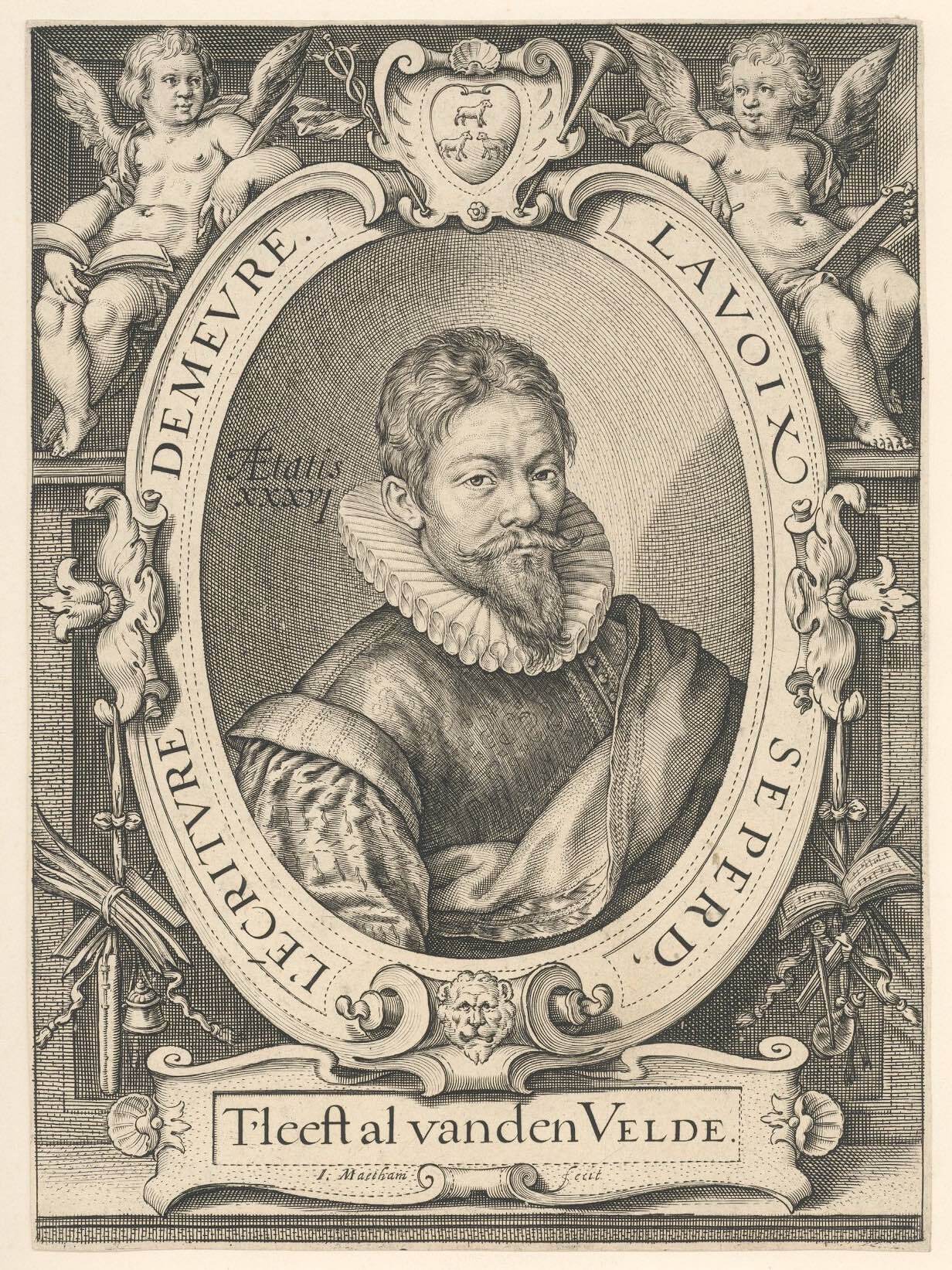
Writing masters became minor European celebrities, well known enough for printmakers to sense a market for their printed portraits. Dutch writing master Jan van de Velde was among the most famous, appearing in several prints, including Portrait of Jan van de Velde (AAP1567). Like other prints depicting well-known artisans and professionals, this engraving by Jacob Matham gives clues to van de Velde’s profession: hanging from the ornamental frame are a bunch of uncut quills with a pen case and a pounce pot (a container for shaking powder over wet ink), and the portrait is flanked by two putti, one holding a quill and the other chalk and a slate.
Velde’s most famous copy book was the 1605 Spieghel der Schijfkonste (Mirror of the art of writing), which featured examples of the prevailing European hands of the time: Dutch, French, German, English, Latin, Italian, and Spanish. The Italian hand took up the lion’s share of van de Velde’s attention. By then, popular style had drifted far from the tight Cancellareca corsiva of the past. The hand of the 17th century was flowing and serpentine, made up of scrolling ornamental flourishes covering the whole page. While some overindulged in the ornamental (to the extent of making them illegible), Velde—though he was known for innovating a style full of elaborate flourishes—was more restrained, keeping in mind that writing was meant to be read.
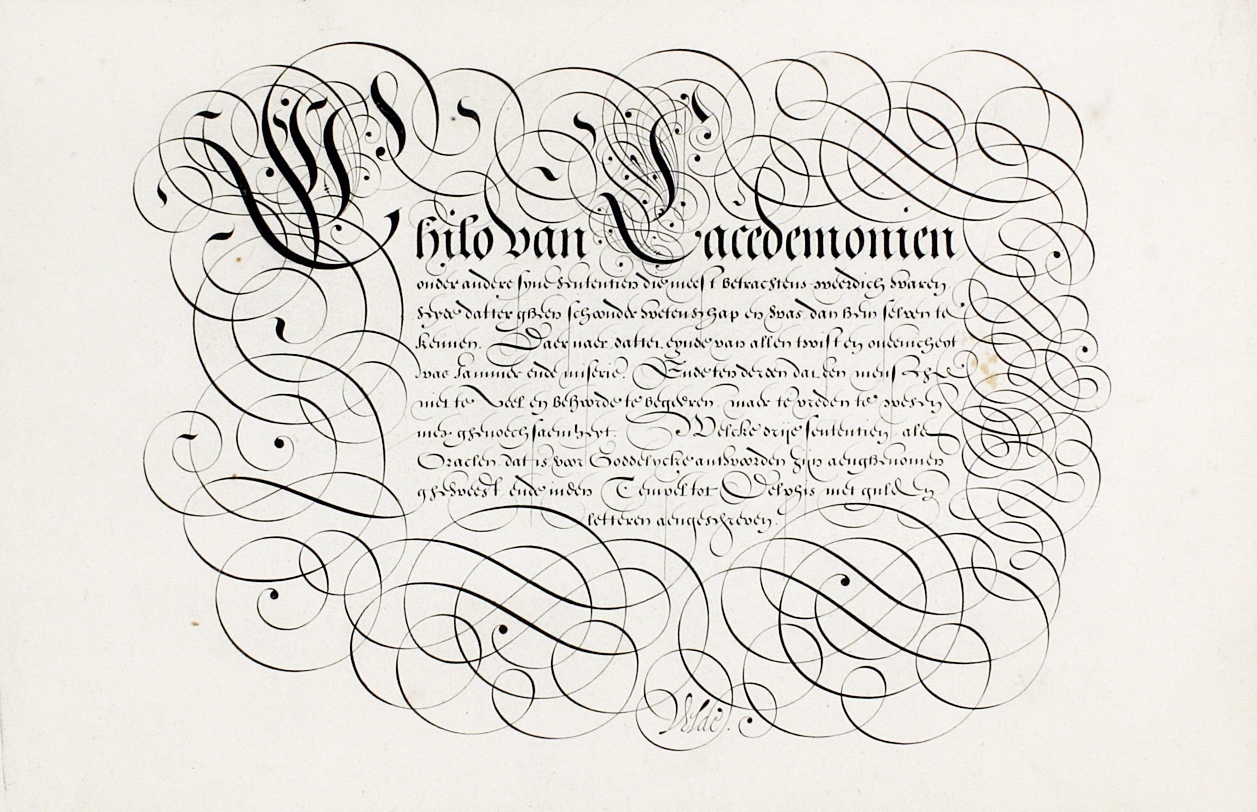
The Dutch writing masters controlled the 17th century (with a significant challenge from the French), but the English controlled the 18th. In 1733, George Bickham began what is likely the best known work of handwriting exemplars: The Universal Penman. Bickham collected samples from 25 London writing masters for inclusion in his 52-part work which he completed in 1741. It published a new hand by the writing masters of London—the English Round Hand—considered by its proponents to be more natural than the Dutch or French hands, and less focused on proving the writer’s artistry than in practical writing. This avowed focus on practicality, however, did not prevent writing masters from indulging in elaborate ornamentation in their lettering.
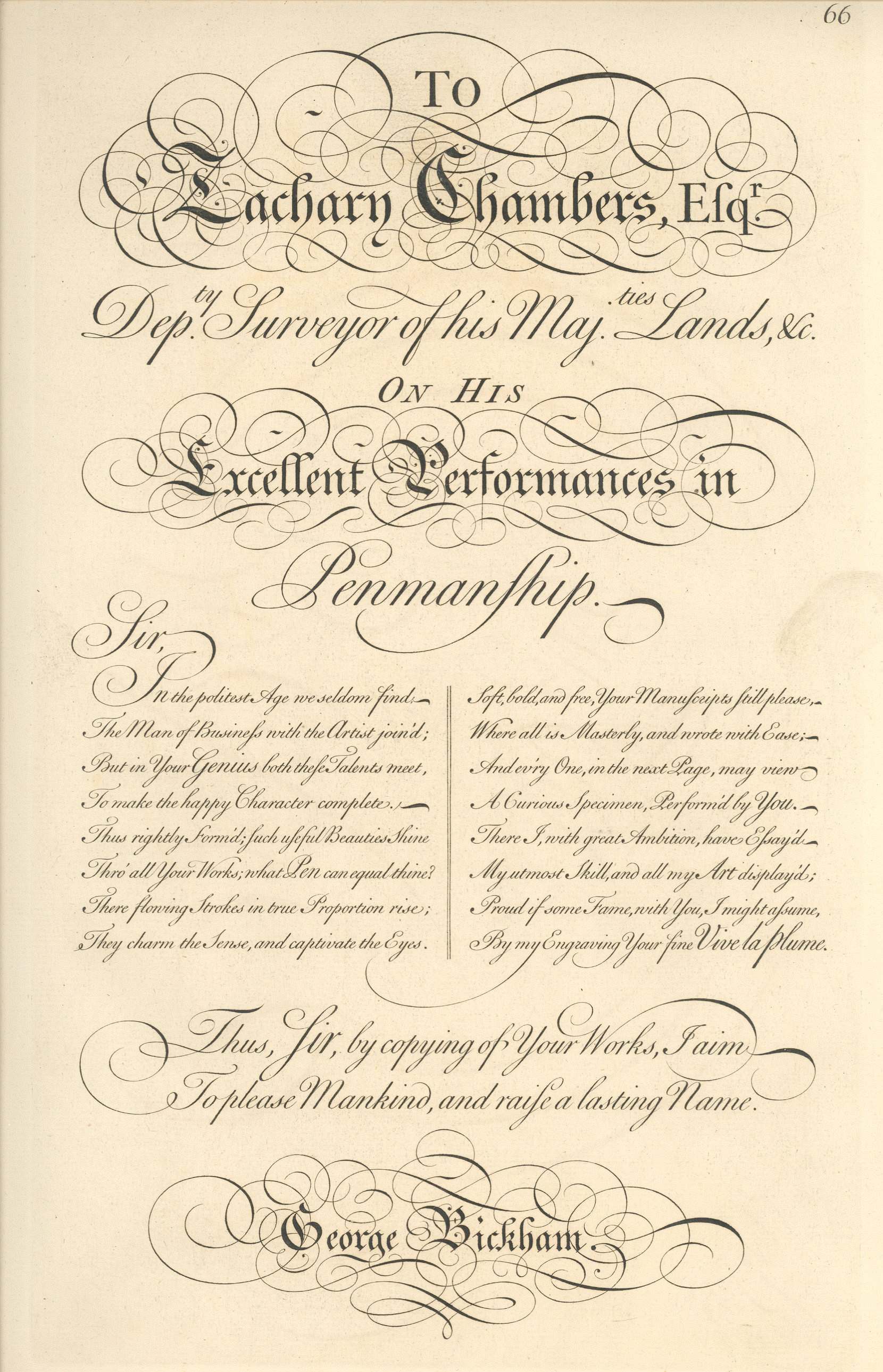
One influential writing master’s history is both short and relatively unknown: a young Brabantian calligrapher named Clément Perret. By 1569, when he published Exercitatio alphabetica nova et utilisima (A new and most useful alphabetical exercise), most books were printed using movable type. Copy books, however, were usually books of woodcuts or wood engravings, demonstrating a writing master’s lettering as if they were images, rather than text. Exercitatio alphabetica was the first copy book made using copperplate engraving. Perret produced a design based on his hand. It was then copied by engravers onto metal plates and printed, bound, and sold by a publisher.
The book’s publisher, Christophe Plantin, was the paterfamilias of the Plantin-Moretus publishing dynasty and arguably Antwerp’s most important publisher. As Antwerp was the publishing capital of Europe, this also made Plantin one of the continent’s most influential publishers.
Exercitatio alphabetica was produced to appeal to a larger audience than just those interested in studying a new hand. It is an artistic work, positioned to appeal to Europe’s print collectors and connoisseurs. The Doetechum brothers, members of Antwerp’s engraving elite, worked on the engraving. The fanciful borders that surrounded Perret’s work were designed by architect, painter, and printmaker Hans Vriedman de Vries and contain charming animals, grotesques, flowers, and human figures. With its aesthetic virtues and Perret’s interesting hand, the book became a founding work of the emerging Dutch calligraphy and the genre of copy books produced in the Low Countries in the late 16th and 17th centuries.
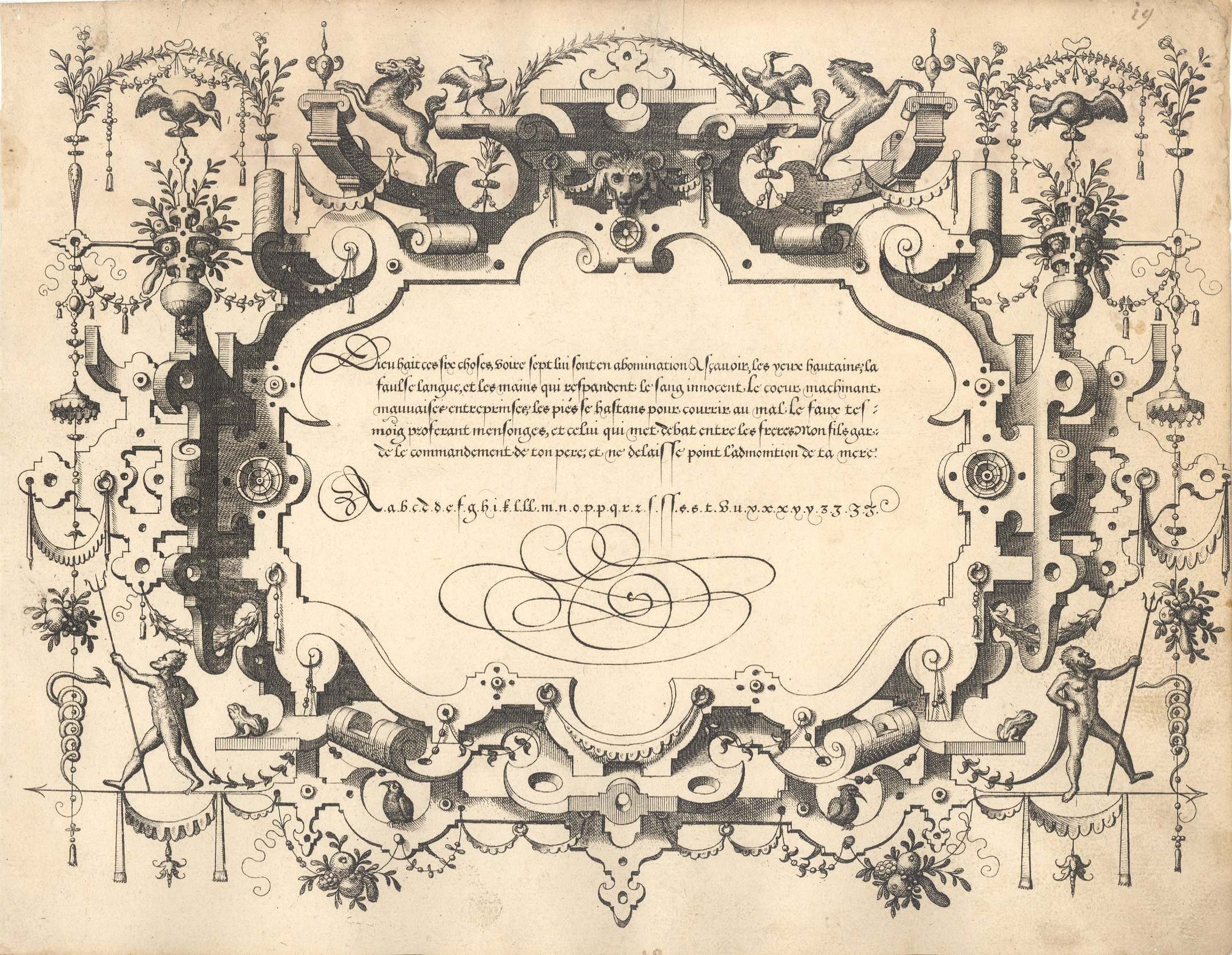
Most of what is known of the life of Perret comes from the title of Exercitatio alphabetica. Written in the long and informative style of the 16th century, the full title is as follows:
A new and most useful alphabetical exercise, in various languages and characters, with beautiful and rare ornaments, shadings, perspectives, and architecture: never previous published. The work of Clément Perret of Brussels, still in his eighteenth year. Year 1569.
Thus we know that in 1569 Perret was 18—young for a writing master and a major contributor to such an important work—and from Brussels, another important city in Flanders and the Duchy of Brabant. Perret produced one other known work, another copy book with a long and informative title:
An alphabet of outstanding skill, containing numerous writing exemplars and as many different scripts, shown in seven different languages. A booklet as useful as it is necessary for all educated persons and also young people who enjoy practicing the art of penmanship. For in studying and copying it beginners will not only acquire greater proficiency in this art, but they will also gain perfect standards for writing similar characters in these languages. Clément Perret of Brabant wrote it, aged 20 years. Year 1571.
There are a few other clues as to who Perret was. His father was likely the Antwerp Francophone author Etienne Perret. While Etienne Perret’s most famous official work was a book of fables published by Christophe Plantin, his most famous unofficial work was an anonymous pamphlet calling for the independence of the Low Countries from Spanish control, also published by Plantin.
The mystery over Clément Perret’s life continues with his death, date unknown. His last known work appeared in 1571, and just a few notes give us clues to his life thereafter. Clément Perret was still alive in 1577 when he inscribed, in an ornamental mirrored hand, a book to the Antwerp cartographer Abraham Ortelius. The inscription refers to the educational value of misfortune.
Elsewhere, the Flemish poet Franciscus Sweertius refers to Perret as a both a writing master and a school master in the Low Countries, suggesting that he may have stayed in the region though he never published another book. Jan van de Velde wrote that Perret—the “excellent Clément Perret”—traveled to England, presumably as a refugee from the upheaval of the Dutch Revolt. Perret died by 1591, memorialized that year in verse, in a copy book produced by Jacob Houthusius:
“The youth of Belgium wept at the death of Perret
With the man his art also perished
Until now: rightly so: this grief is to be calmed
Because you, Houthusius, have come to take up the quill.”
